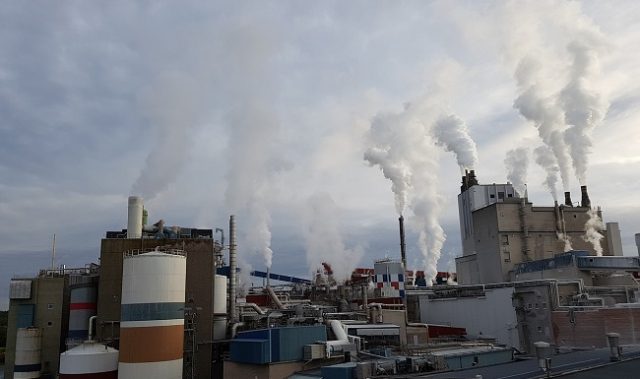
AsianScientist (May 11, 2016) – Researchers in Hong Kong have found that long-term exposure to ambient fine particulate matter is associated with increased risk of mortality from many types of cancer in an elderly Hong Kong population. Findings of the study, led by a team from the University of Hong Kong, were published in Cancer Epidemiology, Biomarkers & Prevention.
The present territory-wide study involved local elderly that were followed up for thirteen years. The team of scientists analyzed the risk of mortality from cancers and exposure to ambient fine particulate matter—that is, particles with an aerodynamic diameter of less than 2.5 micrometers, or PM2.5—on almost 67,000 persons aged 65 or above. Particulate matter are particles found in the air, including hydrocarbons and heavy metals produced by transportation and power generation, among other sources.
The population studied was enrolled in the Elderly Health Services Cohort of the Department of Health from 1998 to 2001 and subsequently followed up until 2011. Causes of death were determined based on Hong Kong’s death registry. Annual concentrations of PM2.5 at their residential addresses were estimated using PM2.5 concentrations measured at fixed-site monitors, horizontal-vertical locations, and satellite data.
After adjusting for the factor of smoking, the study showed that the risk of dying from any cancer rose by 22 percent; by 42 percent from cancer in the upper digestive tract; and by 35 percent from accessory digestive organs, which include the liver, bile ducts, gall bladder and pancreas, for every 10 µg/m3 increase in PM2.5.
The rate of increase in PM2.5 was also associated with an 80 percent increased risk of mortality from breast cancer for women, and a 36 percent increased risk of dying of lung cancer for men.
“The study findings are of public health importance, particularly in Asia where air quality is poor and that local data on the long-term health effects of PM2.5 to support policy on air quality management is scarce,” said lead researcher of this study, Honorary Associate Professor Wong Chit-ming.
“Long-term exposure to particulate matter has been associated with mortality mainly from cardiopulmonary causes and lung cancer, but there have been few studies showing an association with mortality from other cancers. We suspected that these particulates could have an equivalent effect on cancers elsewhere in the body,” added co-lead author, scientific officer Dr. Thach Thuan-quoc.
Thach indicated that some possible explanations for the association between PM2.5 and cancer could include defects in DNA repair function, alterations in the body’s immune response, or inflammation that triggers angiogenesis, or the growth of new blood vessels that allows tumors to spread. In the case of the digestive organs, heavy metal pollution could affect gut microbiota and influence the development of cancer, Thach added.
“Further research would be required to determine whether other countries experience similar associations between PM2.5 and cancer deaths, but this study combined with existing research suggests that other urban populations may carry the same risks,” the team said.
“The implications for other similar cities around the world are that PM2.5 must be reduced as much and as fast as possible. Air pollution remains a clear, modifiable public health concern.”
One limitation of the study is that it focused solely on PM2.5. Thach said that emerging research is beginning to study the effects of exposure to multiple pollutants on human health. He also cautioned that pollution is just one risk factor for cancer, and others, such as diet and exercise, may be more significant and more modifiable risk factors.
The article can be found at: Wong et al. (2016) Cancer Mortality Risks from Long-term Exposure to Ambient Fine Particle.
———
Source: University of Hong Kong; Photo: Shutterstock.
Disclaimer: This article does not necessarily reflect the views of AsianScientist or its staff.












